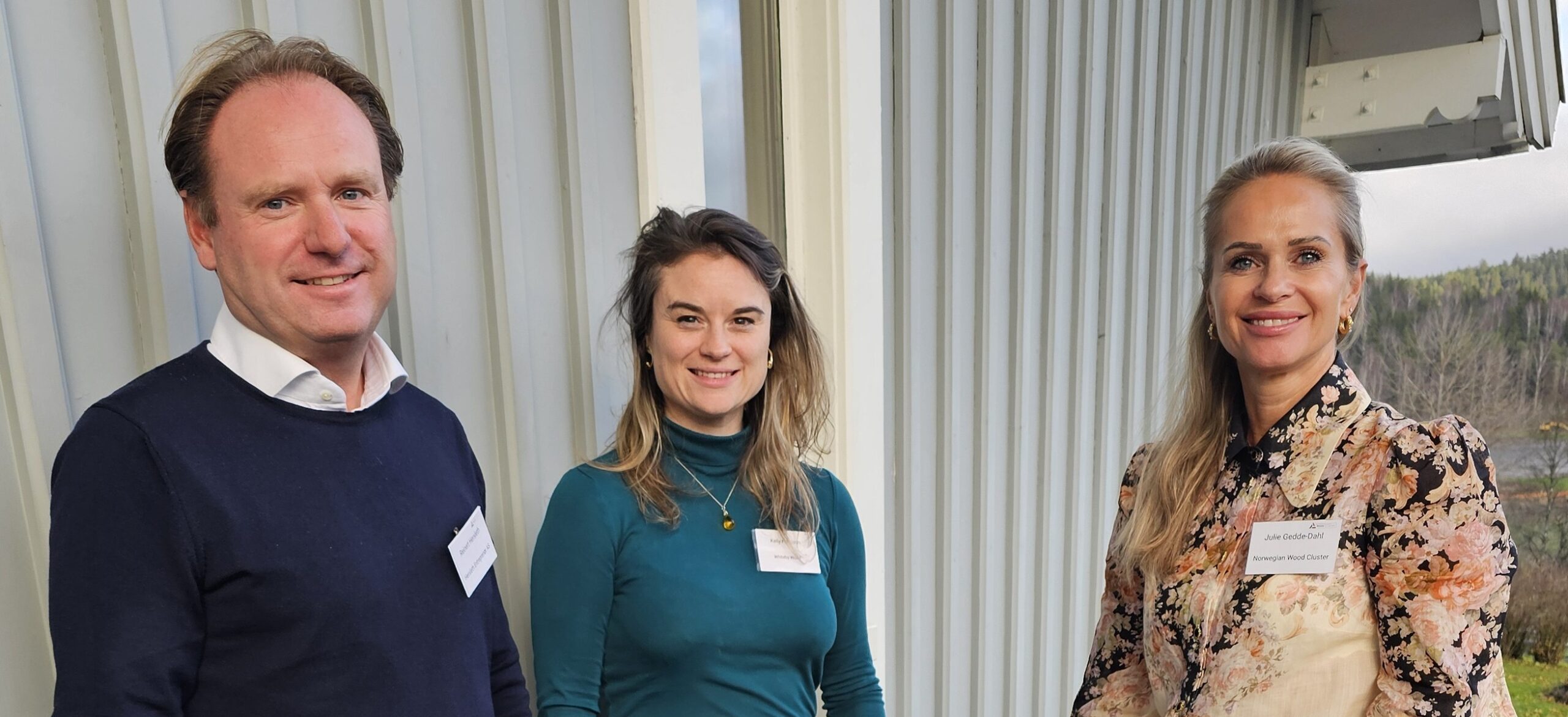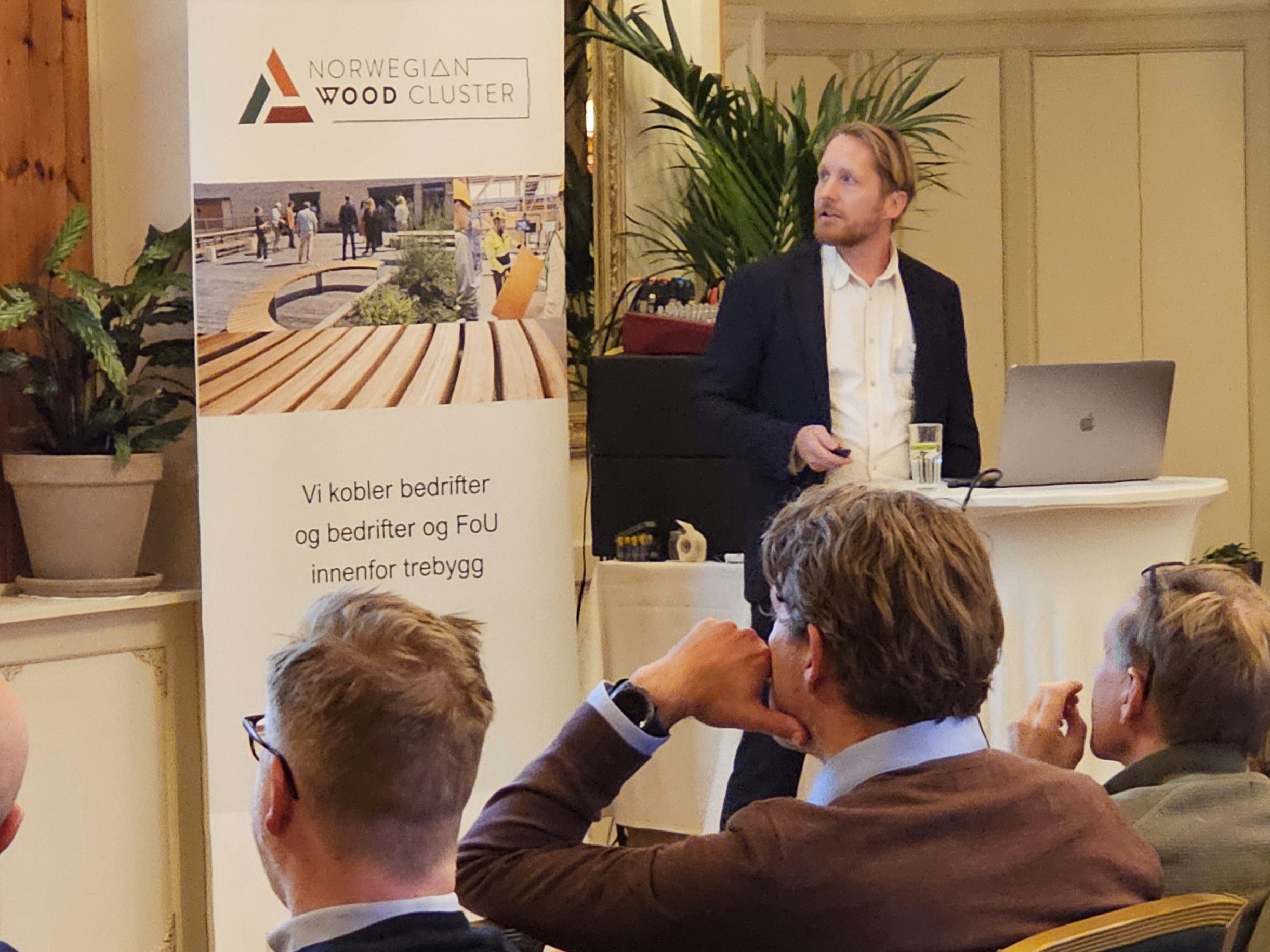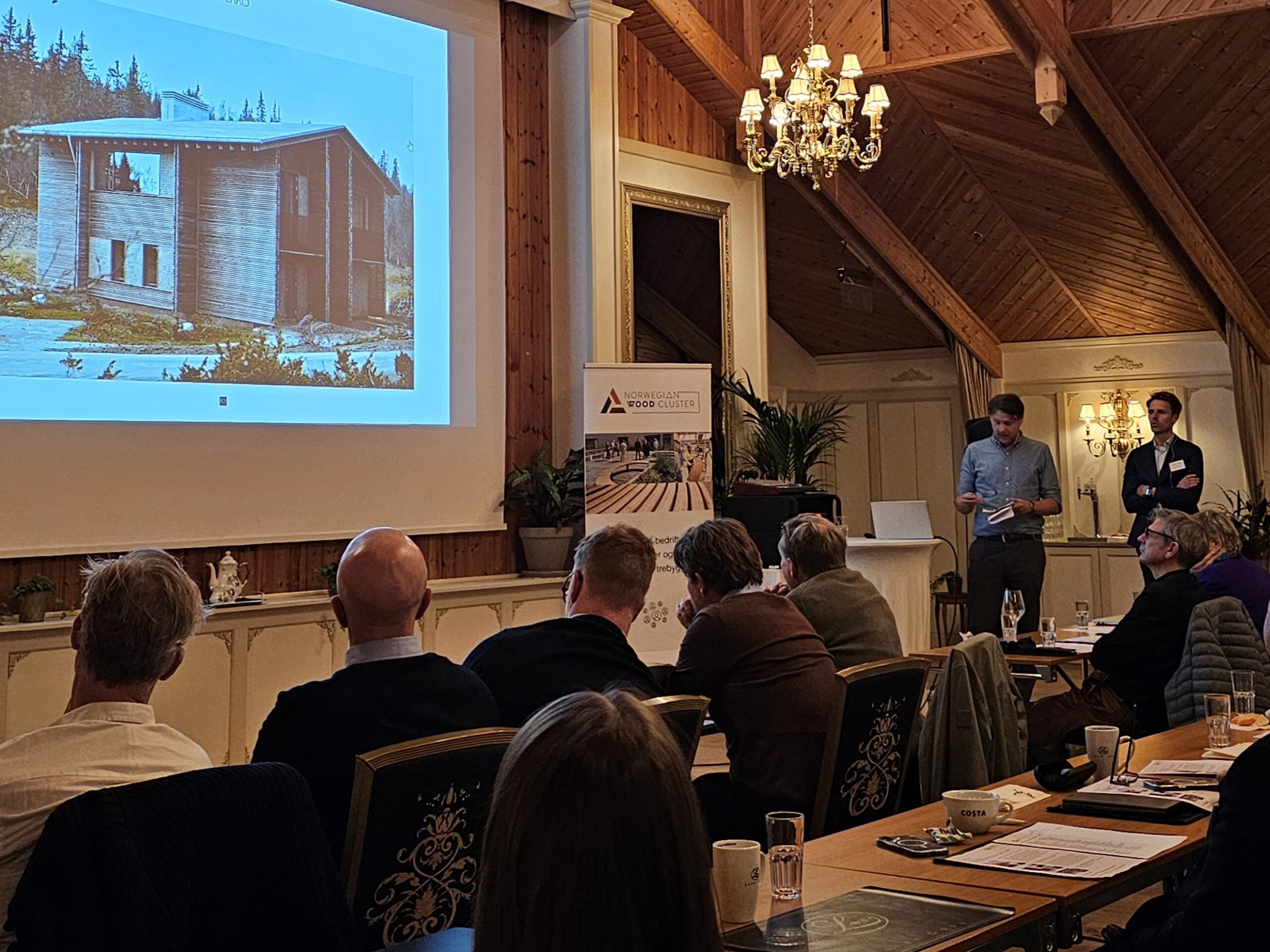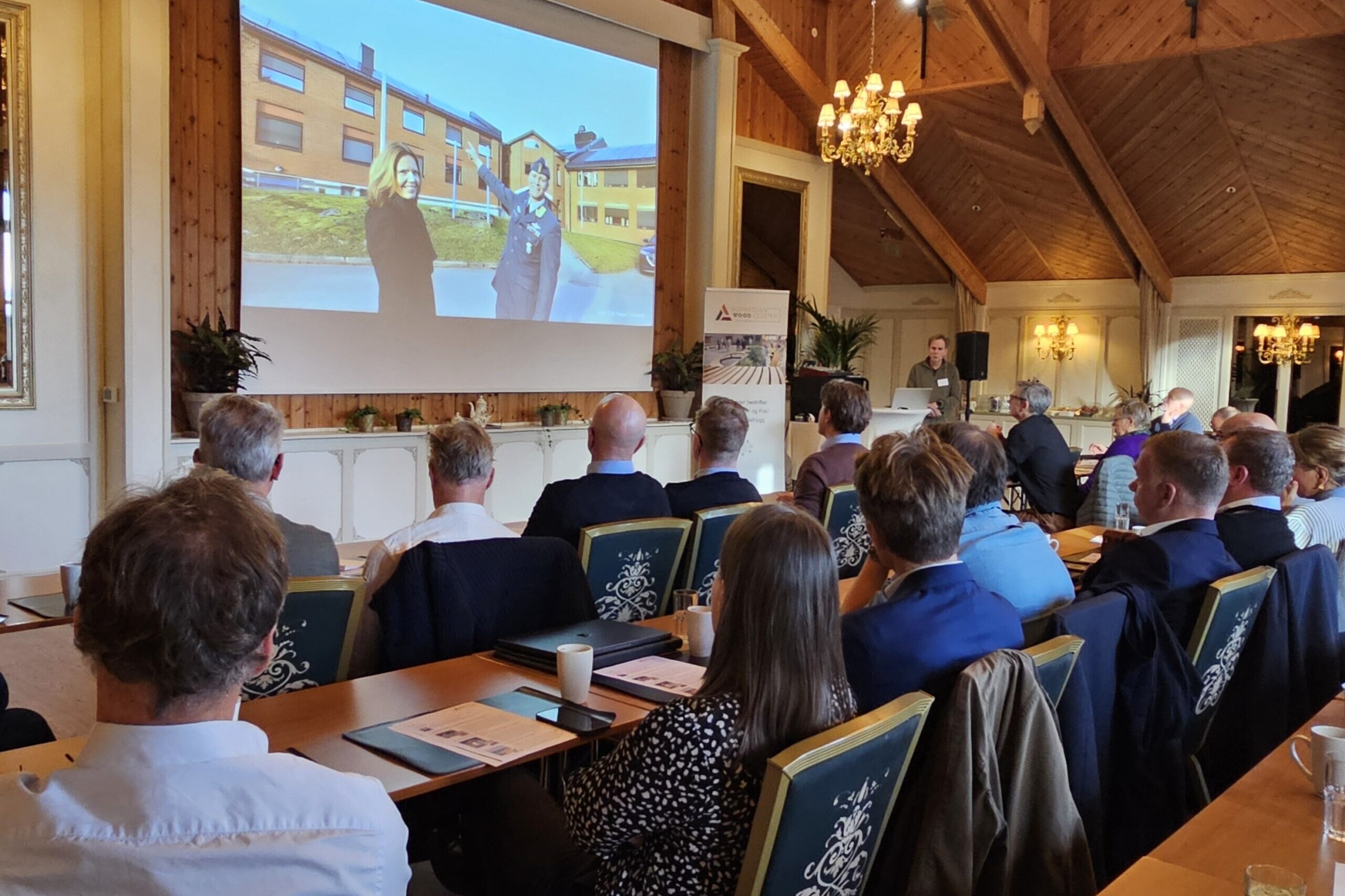
Want more standardization
Magnus Sparrevik is head of sustainability at the Norwegian Defense Estates Agency, and we invited him to this year’s top management gathering to talk about sustainability and material use. In the coming decade, the Norwegian Armed Forces plan to invest NOK 114.1 billion in building and construction. In addition, they have a goal of cutting greenhouse gas emissions from material use, which should provide good opportunities for our industry.
Sparrevik mentioned, among other things, that Forsvarsbygg is very keen to look at standardized solutions for its category buildings, both buildings for education, accommodation and other facilities. In addition, there is a focus on circular solutions, better resource utilization and flexible buildings, which may be worth noting for market players.
Great potential for extensions in height
British Kelly Harrison is sustainability manager at architectural firm WhitbyWood and is working on a Dutch Pan European project called “Optoppen”. Through the project, they’ve developed an app that shows the potential for adding wooden structures to the height of existing buildings.
The app is aimed at planning authorities and urban developers, to calculate how extensions can solve development needs without taking up more land. By inputting existing buildings and defining how many storeys you want, the app will tell you what’s possible and compares the potential of timber structures versus steel or concrete decks(www.optoppen.org). “This has become a verb now, people are ‘topping up’. It almost became a movement, not just an app and a project,” said Harrison.

Reinert Hersleth is CEO of Hersleth AS, which builds commercial buildings, sports halls and residential buildings. The company has started its own element production to make the construction process more industrialized and efficient, and has good solutions for high-rise extensions. But there are other challenges that need to be solved for building at height – regulatory and financial. That’s why Hersleth has invited industry organizations, authorities and the Norwegian State Housing Bank to collaborate.
– 130,000 new homes are to be built and politicians will not be able to do this alone. “We have many apartment blocks from the post-war period that need upgrading. Here you can build on one floor, the condominium sells the roof and uses the profit for rehabilitation, energy efficiency and installation of elevators, which will also contribute to the ageing wave by allowing existing residents to live at home longer,” explained Hersleth.

A future with wooden buildings
Jørgen Tycho from the architectural firm Oslotre is known as a keen ambassador for nature-based materials and circular solutions. “The average Scandinavian lives 90% indoors, surrounded by synthetic and artificial materials. Asthma and allergies have increased twenty-fold and we find far more environmental toxins in human blood now than before. We are as far away from nature as it is possible to get, and we need to change that by thinking regeneratively,” said Tycho.
This was supported by partners Thomas Thorsnes and Francisco Kocourek of R21 arkitekter, who have ambitions to create architecture of a quality that allows things to be preserved and passed on. Among other things, R21 has developed a prototype of cabins called “Tre på rad” (Three in a row) with laminated lath logs, a modern construction method based on long building traditions. This is a cabin concept developed with the ambition of combining architectural quality, flexibility and sustainability in a compact format. The building system can be mirrored and rotated so that the cabin can be adapted to different plots and orientations – regardless of sun, view, access or terrain.
– We use a lot of wooden elements in facades, which often stand up to price competition with other materials. We use prefabricated wall elements in wood or precut in almost all projects. Suppliers show great flexibility, but we need to challenge each other so that production, quality, durability and visual expression are combined,” said Thorsnes.
R21 was asked how interior surfaces withstand hard use, and Thorsnes commented: “I think it’s easier to live with nicks in wood than in plaster. Wood gets a nice patina when it’s used. Tycho supplemented with comments from school caretakers who report less vandalism and maintenance costs. He added that the wooden floor at Gardermoen has only been sanded once in 30 years….


R&D center with biomechanical lab in Skjerven biopark
Finally, Arne Jebsen, CEO of Hunton, gave an update on the development of Skjerven Biopark in Gjøvik. In addition to focusing on green industrial and commercial establishments, a separate R&D center with a woodworking lab is being developed centrally in the park. It will act as a resource center for the companies that establish themselves in the biopark, but also offer research activities and facilities for other businesses in the forest and bio industries.
Hunton is the developer of the R&D center, which is scheduled for completion in 2026.

